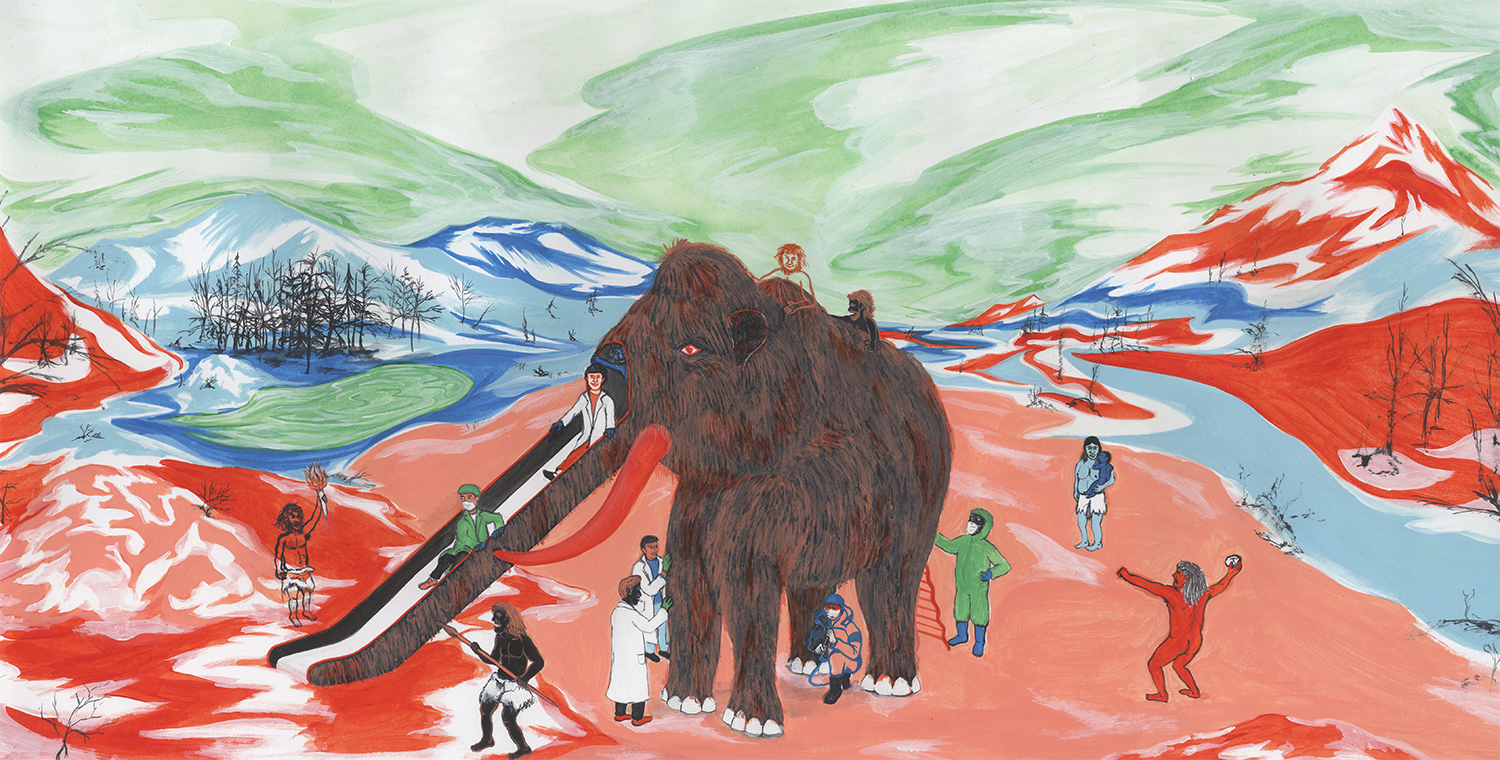
The idea of bringing an extinct creature back from the dead is a seemingly ludicrous one. After all, if there are no creatures of a particular species left to reproduce, how can humans possibly expect to play God and resurrect them?
For generations this has been an idea reserved for sci-fi literature and CGI-laden blockbusters. But as modern science evolves, concepts that we thought previously impossible can occasionally become reality. Amazingly, scientists now recognise that there is a very real possibility of reintroducing one of the ice age’s most iconic animals in our modern world.
The woolly mammoth was an incredible creature—these shaggy-coated elephants were well-adapted to live in the Arctic tundra, braving temperatures of minus 50 degrees celsius. Most mammoths went extinct after their native glaciers melted 10,000 years ago, but a small population managed to survive in Siberia until approximately 3,700 years ago.
It’s the DNA from these mammoths that scientists believe they could use to bring the snowy giants back to life, or at least a modern version of them: the DNA from well-preserved siberian mammoths would need to be mixed with genes from a modern-day relative, the Asian elephant. We chatted to Vincent Lynch, Assistant Professor in Organismal Biology at the University of Chicago, to find out more.
Hi Vincent. What research you have been involved with regarding the resurrection of woolly mammoths?
Along with my collaborators Webb Miller from Penn State and Stephan Schuster from Nanyang Technological University, we have sequenced the genome of two Asian elephants and two woolly mammoths. We then compared the mammoth genome to Asian and African elephant genomes to identify genetic changes unique to mammoths. It is the subset of these genetic changes that are responsible for making mammoths more mammoth-like than elephant-like. Since publication of the genomes, we have been busy characterising some of the proteins with mammoth-specific changes to determine if they altered the function of the proteins and played a role in the mammoth’s cold adaptation.
How would a scientist go about creating a modern mammoth or mammoth-like elephant?
One would use a method called genome editing, which allows scientists to precisely change single nucleotides in the genome. Starting with a modern elephant cell, one could in principle use this technology to edit the elephant genome and make it more mammoth-like. Once these changes are made in the cell, we would induce that single cell to develop an embryo and implant the embryo into an elephant, similar to IVF treatment.
What advantages would an elephant with mammoth-like qualities have?
As with all things in biology, it depends in the environment. An elephant with mammoth-like adaptations to the cold, such as thick layers of fat and long, thick hair might be able to live in much colder places than elephants do today, which may be advantageous. Of course, those same traits would be a disadvantage in warm environments. Indeed, the warming world at the end the last ice age likely contributed the the extinction of the mammoths.
Which environments on Earth would be most suited to an animal like this?
If these mammoth-elephant chimeras were made to tolerate the extreme cold like mammoths, they’d likely only be able to live cold places such at the arctic tundra found in extreme Northern Siberia, Europe, Alaska, or Canada. Of course to survive in these extreme environments takes more than fat and fur; it likely also requires the evolution of specialised diets and adaptations to long, dark arctic winters, and maybe even specialised survival knowledge.
Elephants are remarkably social and smart animals. Knowledge such as foraging locations, where to find water during the winter and migration routes could have been passed between generations by learning rather than genetics. Without these traits there may be nowhere on earth, particularly one that is growing warmer thanks to climate change, suited for mammoth-like elephants.

What ethical factors would have to be taken into account during an innovative genetic undertaking such as this?
Very many. I oppose to making mammoth-like elephants on philosophical grounds. Until you edit away all the places in the genome that make elephants elephants and edit in all the places that make mammoths mammoths, one doesn’t really have a mammoth. It’s just an elephant with mammoth-like traits. I guess this is a bit of Platonic essentialism.
Then there are more practical concerns. For example, should we really be investing resources to make cold-hardy elephants when the world is warming and the environments in which the these animals can live may not be around for much longer? Should we not invest this money in preserving the environments that elephants live in so they don’t go extinct?
Do you believe that climate change or hunting led to the mammoth’s extinction?
All is always the answer in biology, both likely contributed.
Would these causes also be an issue for a genetically engineered mammoth-like elephant?
Certainly global warming should be a concern for those interested in resurrecting a mammoth. What is the climate in pleistocene park predicted to be like in 50 or 100 years? Will it still be habitable by mammoths, or will it be a muggy swamp? I actually don’t know the answer, but would be interested to know.
Why is cloning an actual mammoth probably not possible?
In order to clone a mammoth one needs a living mammoth cell from which an undamaged genome could be isolated and transferred to another cell. But DNA degrades over time, even in living organisms, and becomes unsuitable for cloning.
Finally, what other extinct animals could potentially (if not ethically) be brought back to Earth through biogenetics?
Technically, anything from which we can sequence a genome!
Thanks for your time, Vincent.
